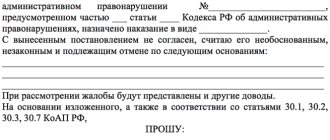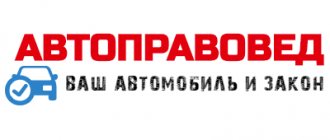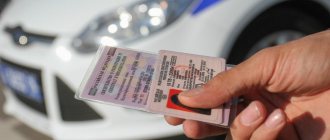Requirements for automobile fire extinguishers
The list of requirements was developed jointly by the Ministry of Emergency Situations and Rospozhnadzor; it can be found on the product itself. It includes the following items:
- Compliance with established GOST standards
: R51057-2001; - NPB 155-2002.
a fire extinguisher carried in a passenger car is 2 liters, and in a cargo car - 5.
is constantly maintained at the same level, as this indicates whether the device is fully charged. For passenger transport, the minimum weight is 2 kg, for cargo transport - 5.
Its availability can be checked at the time of purchase of the device. It usually contains the following points:
- specifications;
. For many years, there have been two types of fire extinguishers - powder and carbon dioxide. Other types are not suitable for safety reasons.
Car fire extinguisher for technical inspection 2019: requirements
Cars are vehicles with an increased potential for fire, so the presence of fire safety equipment in the car will help save both it and your own health in the event of a wiring short circuit or other problems. From this article, the reader will learn which fire extinguisher is needed for technical inspection in 2019. If in Soviet times such equipment was standardized, and there was no need to think twice about choosing it, in a market economy it is advisable to be more selective.
Types of automobile fire extinguishers
First, let's figure out what types of fire extinguishers you can choose from. It’s worth mentioning right away that foam (small volume is not enough to suppress a strong fire) and water (cannot extinguish the fuel tank and engine) models are not suitable for a car.
Inspection requirements for a car fire extinguisher in 2019 require the use of carbon dioxide or powder devices. The first type is much more effective, but the price and dimensions of the cylinders are larger than those of powder devices.
However, a fire extinguisher filled with powder requires a more careful attitude and has a number of disadvantages:
- when used, there is no cooling effect to prevent re-ignition;
- visibility decreases;
- After some time, the powder clumps into lumps, clogging the outlet. Timely maintenance of the device is important, otherwise it may fail at the most crucial moment;
- the powder can damage the electrical equipment of the machine and the moving elements of the system.
Carbon dioxide fire extinguishers, in turn, accumulate static current on the surface. The substance used in them sometimes causes dizziness or fainting. Incorrect position of the cylinder in the hands provokes injuries (liquefied gas is dangerous due to the low temperature).
Requirements for a fire extinguisher during technical inspection
Both powder and carbon dioxide fire extinguishers must comply with the standards established by Rospozhnadzor together with the Ministry of Emergency Situations. At the moment the following requirements are relevant:
- Comply with GOST standards NPB 155-2002, as well as R51057-2001. If you adhere to the standards prescribed in these documents, 90% of the conditions for passing maintenance will be met.
- The volume of the fire extinguisher for technical inspection must be 5 liters for trucks and 2 liters for cars.
- It is also worth considering the weight requirements. It tells you whether the device is completely full. The inspector will definitely measure the weight of the fire extinguisher. On passenger cars it must be at least 2 kg, on trucks, respectively, at least 5 kg.
- An important parameter for technical inspection is the expiration date of a car fire extinguisher. When the expiration date expires, the pressure in the cylinder decreases and the active properties of the internal substances deteriorate. There are concepts of real and nominal service life. The traffic police inspector will be interested in the second one, which is established by regulations: the cylinder itself is used for no longer than 10 years (the date of purchase can be checked in the device’s passport), and recharging is carried out every 1.5–5 years.
- Pay attention to the markings. It must contain user instructions and the address of the company where you can contact for service, as well as the date of refueling/full refueling.
Checking fire extinguishers
Regular inspections of fire extinguishers are carried out quarterly and annually by an employee of a convenient inspection point. In the first case, the correct location of the equipment is confirmed (the fire extinguisher must be in an easily accessible place and well secured), and the presence or absence of non-compliance with safety regulations is established.
Types of automobile fire extinguishers
The differences between all types of fire extinguishers depend on the characteristics of their contents. Let's study each type in more detail.
Powder (OP)
These fire extinguishers contain a powder mixture that is sprayed onto the ignited surface as a dense foam composition that allows you to cut off oxygen to the fire and prevent further spread of the flame.
Powder fire extinguishers are divided into two types: the first is a gas-filled cylinder with a pressure gauge. In the second, gas is formed through a chemical reaction, which requires additional time to complete. Therefore, when choosing, it is better to stick to the first option.
The following notes may appear:
- “G” - equipped with a gas-generating cartridge;
- “B” - a cylinder with gas under pressure;
- "Z" - downloadable.
The advantages of this fire extinguisher include its versatility, which consists in the possibility of using it to eliminate different categories of fire.
In addition, it prevents re-ignition and is much lighter in weight than other devices. Disadvantages include the difficulty of removing surface contamination and a long response delay. In addition, during storage the extinguishing ability is lost, so you should carefully monitor their expiration date.
Carbon dioxide (CO)
The action of these fire extinguishers, like powder ones, is to cut off oxygen to the fire, but instead of powder, carbon dioxide is released under high pressure.
The gas is stored in compressed form, so there are no delays when starting the device. The fire is eliminated through a very strong flow, knocking down the flame and cooling the surface.
The advantage of this type of fire extinguisher is that with their help you can put out even hard-to-reach fires. Also, after using them, there will be no traces or stains left, which means you won’t have to spend a lot of time cleaning the interior later.
However, there is a possibility of poisoning by the contents of the device, as well as getting burns from the device, which are undoubted disadvantages. Also, due to the powerful flow of gas, there is a recoil that can knock the fire extinguisher out of your hands.
And although a carbon dioxide fire extinguisher has better qualities, it is quite heavy compared to other types of fire extinguishers, and its price is several times higher than that of a powder one.
Powder and carbon dioxide fire extinguishers: which is better?
There are several types of fire extinguishers, but in 2021 it is recommended to use only 2 of them for cars - powder and carbon dioxide. Let's take a closer look at the advantages and disadvantages of each of them.
Powder
This type of fire extinguishing device contains a special fire extinguishing powder that forms a dense foam composition that blocks the access of oxygen.
As a result, the fire is extinguished and the fire is eliminated. The marking of these devices is OP, that is, a powder fire extinguisher.
In addition, the device may have additional symbols, for example:
- “G” – equipped with a gas-generating cartridge;
- “Z” – download;
- “B” is a gas cylinder under pressure.
This marking indicates the method of creating pressure. It should be noted that the last 2 types of fire extinguishers fire with a delay of about 5 seconds.
Powder fire extinguishers have a number of advantages:
- extinguish fires of any complexity (classes A-E);
- prevent secondary fire;
- they are lighter and cheaper than other types of devices.
It is also necessary to identify the disadvantages of the OP:
- very pollute the surface;
- Adhered powder is difficult to wash off.
Carbon dioxide (CO)
The active substance here is carbon dioxide (CO2). When filled, carbon dioxide is compressed to the limit, eliminating the need for additional pressure build-up.
The fire is eliminated with the help of a powerful jet of carbon dioxide, which lowers the temperature in the fireplace and knocks out the fire. These fire extinguishers are especially effective when it is necessary to extinguish a fire in places of difficult access.
In addition, after using the op-amp, there is no need to wash the car from foam.
However, there are certain risks when using carbon dioxide fire extinguishers, such as:
- Dioxide poisoning.
- Causing burns from rastrud.
- The recoil resulting from the strong flow of gas can tear the fire extinguisher out of your hands.
Although carbon dioxide fire extinguishers have slightly better characteristics, they are heavier than powder ones and 2-3 times more expensive. The optimal solution for a passenger car is a powder fire extinguisher.
The fire extinguisher must be refilled. Powder devices are refilled every 1.5 years, and carbon dioxide devices – once every 5 years.
How to choose a fire extinguisher for a car?
When choosing a fire extinguisher, do not forget that both the safety of property and your or someone else’s life may depend on your decision, so when choosing a model, first of all you need to pay attention to the quality and serviceability of the device.
Listen to the following recommendations for choosing a device:
- Buy the device in a specialized store, from people who understand this issue. It is mandatory to have documents and certificates for the goods being sold.
- Study all the nuances associated with the models presented on the counter.
- Choose a fire extinguisher that matches the size of your car in terms of parameters and dimensions.
- Make sure that the device is completely intact, without dents, scratches or other defects.
- Check the expiration date of the fire extinguisher.
- Check the presence and integrity of the seals.
- Please read the instructions carefully.
- Check if the pressure indicator is in the green zone.
Price
In 2021, the price of portable models of carbon dioxide fire extinguishers varies from 650 to 1850 rubles. Powder devices are somewhat cheaper - from 500 to 1200 rubles.
Comparison of fire extinguishers
When purchasing a fire extinguisher, pay attention to the following:
- It is better to opt for a metal case. Such products are more reliable than similar plastic products.
- Fire extinguishers with powder extinguishing agent have a pressure gauge. If the product is working properly, the arrow will point to the green zone.
- Each such extinguishing agent is accompanied by a technical passport, and you can also familiarize yourself with the fire certificate and certificate of conformity from the seller, which he must have in stock.
- The fire extinguishing agent check must be sealed.
These simple rules will allow you to purchase a high-quality and safe fire extinguisher for your car, which will meet all the basic requirements for an annual inspection.
Some of the materials are taken from the official group of the Russian Ministry of Emergency Situations “VKontakte”: https://vk.com/mchsgov
Fire extinguisher for truck
For trucks, as a rule, powder devices are chosen, paying primarily attention to resistance to vibration (which should be indicated in the fire extinguisher’s passport).
The weight of a powder fire extinguisher in cargo transport should not be less than 5 kg. It is better to have several fire extinguishers. If one of the fire extinguishers is located outside the cabin, it must be protected from precipitation, sun and dirt.
The device in trucks is usually checked at least once a year. In this case, the service life can be up to 10 years (provided that recharging is carried out every 5 years).
In addition, powder fire extinguishers for trucks are equipped with pressure gauges to monitor pressure. It is necessary to monitor the pressure gauge value so that it is always in the green zone.
The best carbon dioxide fire extinguishers
Models of this group are widely used to eliminate fires of flammable liquid and gaseous substances, components and devices under voltage. When used, traces of extinguishing remove themselves, which eliminates the need for chemical cleaning of the car. These products have found their place in cars and everyday life.
The disadvantage of such devices is its harmful effect on the human body, as well as its high level compared to other fire extinguishers.
Yarpozhinvestf OU-3
This model from the Yaroslavl company is ideal for extinguishing class B and C fires (liquid and gaseous flammable substances), as well as electrical wiring under voltage up to 1000V. Carbon dioxide is released at a pressure of 5.88 MPa and blocks the access of oxygen to the site of flame formation.
Pros of a fire extinguisher:
- Long service life - 10 years.
- Use at temperatures from -40 to +50°C.
- Large mass of fire extinguishing agent 3.0 kg.
- Bright, easy to read instructions with pictures.
Disadvantages of a fire extinguisher:
- Increased weight: 10.5 kg.
- There is a possibility of skin frostbite if the substance comes into contact with it.
Pozhzakhist OU-5 (VVK-3.5)
This is a pump-type carbon dioxide fire extinguisher from a company from Mariupol. It copes well with class B, C, E fires. A jet of snow-like substance (temperature -78°C) released under a pressure of 58 atmospheres can quickly extinguish a fire over an area of up to 2 m2. When extinguishing solid objects: wood, cardboard, paper, smoldering coals may remain.
Pros of a fire extinguisher:
- Large fire extinguishing agent: 3.5 kg.
- Long jet length: from 3 m.
- Supply time sufficient to extinguish fire: 8 seconds.
- Operates over a wide temperature range: -20 – +50°C.
- Rechargeable.
Disadvantages of a fire extinguisher:
- Not detected.
Manufacturers guarantee proper operation of the fire extinguisher for 10 years.
This is interesting: Powder fire extinguishing installations (systems): types, installation, requirements
What is the fine if there is no fire extinguisher?
Not having a fire extinguisher is considered an offense, which is provided for in Part 1 of Article 12.5 of the Code of Administrative Offenses of the Russian Federation.
The fine in this case is 500 rubles. The same amount is paid if the fire extinguisher has expired. The fine must be paid within 60 days from the date of issuance of the resolution on its appointment (Part 1 of Article 32.2 of the Code of Administrative Offenses of the Russian Federation). And despite the fact that if you do not have a fire extinguisher, you should not use the vehicle, traffic police officers are prohibited from:
- Disqualify you from driving a car.
- Detain the car and send it to the impound lot, since this violation is not on the list of grounds for detention (Article 27.13 of the Code of Administrative Offenses of the Russian Federation).
Where to store and how to use?
It is worth remembering that storing a fire extinguisher in the trunk is incorrect.
The Code of Rules (SP 9.13130.2009) states that the storage location for this device is the cabin, next to the driver’s seat. In addition, the fire extinguisher should be securely mounted on brackets so that it does not lie around the cabin. B.7 In buses and trucks, one fire extinguisher must be located in the cab, the other in the passenger compartment or body. B.9 On all vehicles, the location of the fire extinguisher is the cabin, in the immediate vicinity of the driver or in a place easily accessible to him. It is prohibited to store fire extinguishers in places that are difficult to access (trunk, body, etc.).
If a fire occurs, you must follow the following instructions:
- Break the seal.
- Pull the pin.
- Point the nozzle at the location of the fire.
- Press down on the lever.
Keep in mind that there may be a slight delay when the fire extinguisher fires, but the first salvo is released under maximum pressure and does an excellent job of reducing the flames.
It takes approximately 9 seconds to release the first charge. Also be prepared for the fact that in most cases a fire occurs in the engine compartment or, even worse, the wiring under the upholstery may catch fire. Such a fire is called hidden, and it is extremely difficult to eliminate it.
Be careful, because when you open the hood, you give access to oxygen, which can cause the fire to flare up even stronger. You need to stand on the side of the hood and open it with a stick or pry bar. It is also advisable to have gloves at the ready so as not to frostbite your hands (when the carbon dioxide substance comes out, it is very cold, so do not hold the nozzle with your hand while the fire extinguisher is operating).
Fire extinguisher for truck requirements
When extinguishing a fire, the powder released to the surface forms a very dense layer that is impermeable to oxygen, which leads to rapid blocking of the spread of fire. Each such fire extinguisher also has additional markings (“Z”, “G”, “B”), which indicates the mechanism for generating the pressure required to push the powder mixture out of the cylinder.
Options marked with the letters “Z” and “G” have a slight “start” delay, during which the required pressure is built up inside the cylinder. Important! When choosing which fire extinguishing agent should be in the car, you should remember that the use of powder models is guaranteed to exclude the slightest possibility of re-ignition, which is what cars are guilty of.
The main advantage of such devices is their high versatility and the ability to extinguish almost all categories of fires.
But where does determination come from if many do not even know how to use a fire extinguisher and where exactly it is located. And those who know do not have practical skills in working with them. My first experience using a fire extinguisher was in a quiet environment (lucky me). The verification period just expired, and I decided to practice.
The role of the guinea pig was the OP-2 fire extinguisher - a two-liter powder fire extinguisher. Most car enthusiasts have just such an animal in their trunk. I did not count on such a situation.
In the event of a really developing fire, most likely, the first shot would be a test shot, the second a sighting shot, and two “farts” at the target.
Fire extinguisher for truck requirements 2018
Requirements for operation, placement, maintenance) Search the site Fire extinguisher for a car introduction The requirements of the rules oblige us to carry a working fire extinguisher in the car. Many people neglect this requirement, forgetting that they are driving next to a daily supply of explosive gasoline and a large number of hot car parts, from which gasoline can easily ignite.
Unfortunately, if your car catches fire, you only have yourself to blame. The fact is that cars burn very quickly, sometimes 15 minutes is enough for a charred skeleton to remain from the car (in some cases, 3 minutes is enough). And in such a situation it is necessary to act quickly and decisively, especially since the fire must be extinguished at the inception stage because
Only a fire truck can extinguish a fire in a car.
Checking fire extinguishers
The inspection takes place every quarter at a convenient inspection point. During such checks, the presence of a fire extinguisher and its location are confirmed. And the annual inspection already includes a full examination of the device, during which the traffic police officer checks:
- hose flexibility;
- pressure gauge and pressure indicator;
- protective covering;
- filling;
- presence of a mark;
- spray;
- intraballoon pressure;
- weight is measured.
The last step during verification is a special mark in the device’s passport, after which it is entered into the accounting journal. A device that fails the test is either disposed of or recharged.
If you are stopped by a traffic police inspector, then according to paragraph 2.1.1 of the traffic rules, all that he will ask you to show is a car registration certificate, a driver’s license, etc. - there is no fire extinguisher on this list.
The driver should remember that this paragraph relates to checking the technical condition of the car, which requires special justification (clause 110 of the Administrative Regulations of the State Traffic Safety Inspectorate, approved by Order of the Ministry of Internal Affairs dated August 23, 2017 No. 664).
Do not forget that a fire extinguisher is necessary not only to successfully pass the test, but to be able to get by with only minor losses in the event of a possible fire, not to mention saving lives. Therefore, it is necessary to take full responsibility when choosing a fire extinguisher for your vehicle.











